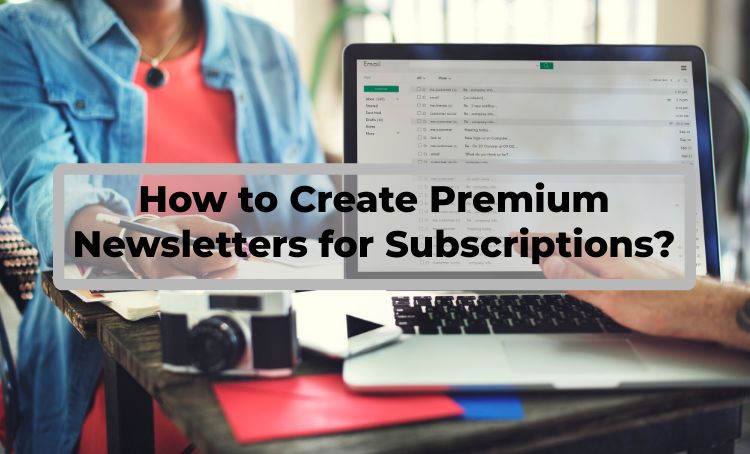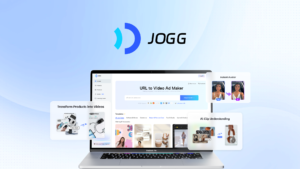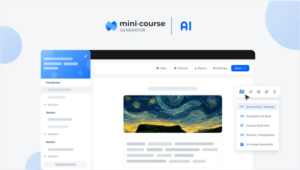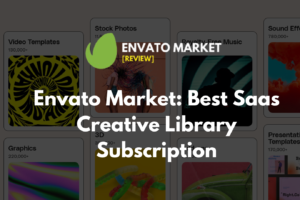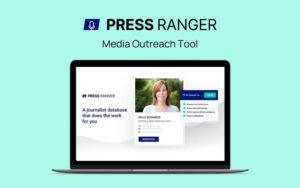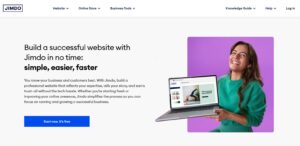Creating premium newsletters for subscriptions involves strategic planning and engaging content. Start by identifying your audience and their interests.
Next, choose a platform that supports your goals. Newsletters are a powerful way to build connections and offer value. They can boost engagement, drive traffic, and generate revenue. To create a premium newsletter, focus on quality content, attractive design, and a clear call-to-action.
Understand your audience’s needs and tailor your content accordingly. Use compelling headlines to draw readers in. Consistency is key. Regular updates keep subscribers interested and loyal. Personalize your newsletters to make them feel exclusive. Analyzing performance metrics helps refine your strategy. With dedication and the right approach, you can create newsletters that stand out and succeed.
Identifying Your Audience
Creating a premium newsletter requires understanding your audience deeply. Identifying your audience is the first and most important step. Knowing who you are writing for ensures your content resonates. It also helps in crafting messages that your readers find valuable. Let’s dive into how you can identify your audience effectively.
Target Demographics
Begin by defining your target demographics. This includes age, gender, location, and occupation. For instance, are you writing for young professionals or retirees? Knowing this helps tailor your content. Use surveys or social media insights to gather this data. It provides a clear picture of who your readers are.
Understanding Interests
Next, understand your audience’s interests. What topics do they care about? Are they interested in tech news or lifestyle tips? Use polls or feedback forms to find out. Look at trending topics in your niche. This information helps in creating relevant and engaging content. Your newsletter should address their needs and interests.
By focusing on these aspects, you ensure your newsletter stands out. It becomes something your readers look forward to. Remember, knowing your audience is key to creating a successful premium newsletter.
Choosing The Right Platform
Choosing the right platform is crucial for creating premium newsletters. The right platform ensures your newsletters reach the right audience efficiently. It also helps manage your content better. Here are some options to consider:
Email Service Providers
Email Service Providers (ESPs) help you send bulk emails. They offer templates and analytics. Popular ESPs include Mailchimp, Constant Contact, and SendinBlue. These tools simplify your email campaigns. They track open rates and clicks. This data helps improve future newsletters.
Content Management Systems
Content Management Systems (CMS) help you organize your content. They are useful for managing articles, images, and other media. WordPress is a popular CMS for newsletters. It offers plugins like MailPoet and Newsletter. These plugins integrate your content with your email campaigns. This makes it easier to maintain a consistent message.
Both ESPs and CMSs have their strengths. Choose the one that fits your needs. If you need detailed analytics, go for an ESP. If you want to manage content easily, a CMS is a better choice.
Crafting Compelling Content
Creating premium newsletters involves understanding your audience and delivering valuable content. Focus on clear, concise language and engaging topics. Regularly update with relevant information to keep subscribers interested.
Creating a premium newsletter requires more than just good design. It needs compelling content that keeps readers coming back. Whether you’re new to writing or have some experience, crafting engaging content is vital. This section will guide you in creating content that grabs attention and holds it.Engaging Headlines
Headlines are the first thing readers see. They need to be catchy and relevant. Use strong, specific words. Ask questions or promise a benefit. Keep them short, ideally under 10 words. The goal is to make readers curious. They should feel like they must read more.Quality Articles
Quality matters in every part of your newsletter. Start with a clear, concise introduction. Explain what the article is about. Use short paragraphs and simple words. Make your content easy to skim. Break up text with subheadings. Use bullet points for lists. This helps readers follow your ideas. They will enjoy reading and stay engaged.
Credit: www.getresponse.com
Designing An Attractive Layout
Creating premium newsletters for subscriptions involves careful consideration of various elements. One of the most important aspects is designing an attractive layout. An appealing design ensures readers stay engaged and look forward to your newsletters. Below, we will explore key elements that contribute to an attractive layout.
Visual Appeal
Visual appeal is crucial in keeping your audience engaged. Use high-quality images and graphics that align with your content. Choose a clean and professional color scheme. Maintain consistency in your fonts and spacing. The overall design should be eye-catching but not overwhelming.
User-friendly Navigation
User-friendly navigation helps readers find information quickly. Include clear headings and subheadings. Use bullet points for better readability. Ensure that links are easily identifiable. A well-structured layout makes your newsletter easy to scan. This improves the reader’s experience.
Personalization Techniques
Creating premium newsletters that subscribers love involves personalization techniques. Personalization increases engagement and reader loyalty. Here are some effective strategies to personalize your newsletters.
Segmentation Strategies
Segmenting your audience is crucial. Different segments have different needs. Tailor your content for each group. Here are a few ways to segment your audience:
- Demographic Segmentation: Age, gender, and location.
- Behavioral Segmentation: Purchase history and engagement levels.
- Psychographic Segmentation: Interests, values, and lifestyles.
- Geographic Segmentation: Country, region, and city.
Use these segmentation strategies to deliver targeted content. Targeted content resonates more with readers.
Dynamic Content
Dynamic content changes based on the reader. It makes newsletters feel personalized. Here are some dynamic content ideas:
- Personalized Greetings: Start with the subscriber’s name.
- Content Recommendations: Suggest articles based on past reads.
- Special Offers: Provide exclusive deals for loyal readers.
Dynamic content keeps readers engaged. It shows that you value them individually.
Here is a simple code example to include personalized greetings:
Hello, php echo $subscriber_name; ?!
Use these personalization techniques to create premium newsletters. Your subscribers will appreciate the effort and attention.

Credit: www.involve.me
Monetization Strategies
Creating premium newsletters can be a lucrative venture. Identifying effective monetization strategies is crucial. This section explores two primary methods: subscription models and advertising opportunities. Both approaches can generate substantial revenue, ensuring your newsletters are not just informative but also profitable.
Subscription Models
One of the most reliable ways to monetize your newsletters is through subscription models. Offering tiered memberships can attract different audience segments. Here are a few popular options:
- Free Tier: Provide basic content to attract new subscribers.
- Premium Tier: Offer exclusive articles, early access, and special features.
- VIP Tier: Include personalized content, direct interaction, and premium support.
The table below summarizes the features of each tier:
| Tier | Features | Price |
|---|---|---|
| Free | Basic Content | $0 |
| Premium | Exclusive Articles, Early Access | $5/month |
| VIP | Personalized Content, Direct Interaction | $10/month |
Advertising Opportunities
Advertising within your newsletter can also be lucrative. There are various advertising opportunities you can explore:
- Sponsored Content: Partner with brands to create content that aligns with their products.
- Banner Ads: Place banner ads at strategic locations within your newsletter.
- Affiliate Links: Earn commissions by including affiliate links in your content.
Each method has its advantages:
- Sponsored Content: High revenue, but ensure it aligns with your brand.
- Banner Ads: Easy to implement, but may affect reader experience.
- Affiliate Links: Performance-based income, requires careful placement.
By combining these monetization strategies, you can create a sustainable income stream from your newsletters. Ensure your content remains valuable to your subscribers while exploring these revenue opportunities.
Marketing Your Newsletter
Marketing your newsletter is essential for gaining subscribers and growing your audience. You can have the best content, but if no one knows about it, your efforts will go unnoticed. To ensure your newsletter reaches a wider audience, you need to employ effective marketing strategies. Let’s explore some key methods to promote your newsletter.
Social Media Promotion
Social media platforms offer a great way to market your newsletter. Share snippets of your content on Facebook, Twitter, LinkedIn, and Instagram. Use eye-catching images and short teasers. This will attract attention and drive users to subscribe.
Engage with your audience by responding to comments and messages. Create a sense of community and make your followers feel valued. This will build trust and encourage more people to subscribe to your newsletter.
Collaborations And Partnerships
Partnering with other creators or businesses can expand your reach. Collaborate with influencers in your niche. They can promote your newsletter to their followers. This can introduce your content to a new audience.
Consider guest posting on popular blogs. This can help you tap into their readership. Offer to feature guest posts from other experts in your newsletter. This can provide value and diversify your content.
Build relationships with other content creators. Mutual support can go a long way. Share each other’s work and cross-promote. This will help both parties grow their audiences.

Credit: www.getresponse.com
Analyzing Performance
Creating premium newsletters is an art. To ensure your newsletters thrive, analyzing performance is crucial. This helps refine content, enhance engagement, and boost subscriptions. Below, we explore key metrics and tools for analysis.
Key Metrics
Understanding key metrics is vital for newsletter success. Here are some essential metrics to track:
- Open Rate: Percentage of recipients who open your email. High open rates indicate interest.
- Click-Through Rate (CTR): Percentage of recipients who click on links in your email. Higher CTRs show content relevance.
- Bounce Rate: Percentage of emails not delivered. Lower bounce rates mean better email list quality.
- Unsubscribe Rate: Percentage of recipients who opt-out. Low unsubscribe rates suggest content satisfaction.
Tools For Analysis
Using the right tools can simplify performance analysis. Here are some popular tools to consider:
| Tool | Features |
|---|---|
| Google Analytics | Tracks user behavior, traffic sources, and conversions. |
| Mailchimp | Provides detailed email campaign reports and insights. |
| HubSpot | Offers comprehensive email performance metrics and analytics. |
| ConvertKit | Focuses on email deliverability and engagement tracking. |
These tools help you understand subscriber behavior. They assist in optimizing future newsletters.
Frequently Asked Questions
What Makes A Newsletter Premium?
A premium newsletter offers exclusive content, professional design, and valuable insights. It should be well-researched and provide unique information that readers can’t find elsewhere.
How To Choose A Niche For Newsletters?
Select a niche based on your expertise and audience interests. Research market demand and competition to ensure your newsletter stands out.
How Often Should You Send Newsletters?
Sending newsletters weekly or bi-weekly is ideal. It keeps your audience engaged without overwhelming them. Consistency is key to maintaining reader interest.
What Tools Help Create Premium Newsletters?
Use tools like Mailchimp, Substack, or ConvertKit. These platforms offer templates, automation, and analytics to enhance your newsletters’ quality and reach.
Conclusion
Creating premium newsletters for subscriptions requires effort and creativity. Focus on understanding your audience. Offer valuable, engaging content that they can’t resist. Keep your design clean and professional. Use appealing subject lines to grab attention. Test and refine your strategies regularly.
By following these steps, your newsletters will attract and retain subscribers. Keep your readers excited and coming back for more. Your dedication will pay off with a loyal subscriber base. Happy newsletter crafting!

